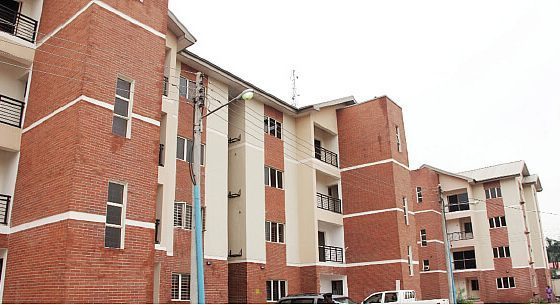Affordable housing is a major challenge across West Africa, where fewer than 7% of households can afford to buy their own home.
The situation is particularly acute in the countries of the West African Economic and Monetary Union (WAEMU) — Benin, Burkina Faso, Côte d’Ivoire, Guinea-Bissau, Mali, Niger, Senegal, and Togo – where demand for decent housing far outstrips supply.
Click here to watch weekly episodes of Housing Development Programme on AIT
But a new financing tool developed by the World Bank Group, is helping thousands of families across the WAEMU access private housing finance and finally achieve their dreams of owning their own home.
The tool is the $2.5bn IDA 18 IFC-MIGA Private Sector Window(IDA PSW), launched in July 2017 to help catalyse private sector investments and create jobs in the lowest income countries eligible for financing from the World Bank’s International Development Association.
The window combines concessional funding provided by IDA donors with financing and guarantee instruments on commercial terms – an approach often referred to as blended finance’.
This is a game-changing, long-term initiative to bring investment to places that banks and investors have deemed too risky.
At the International Finance Corporation, where I lead the institution’s work on ‘blended finance’, the IDA PSW is helping us break new ground to unlock private investment in economies affected by fragility and conflict.
That includes the WAEMU, where banks currently issue just 15,000 new mortgages every year against an annual demand for 800,000 new housing units.
 In December 2017, IFC tapped into the IDA PSW for the very first time with an investment in Caisse Régionale de Refinancement Hypothécaire de l’UEMOA (CRRH-UEMOA), a Togo-based mortgage refinancing company sponsored by the West African Development Bank and IFC.
In December 2017, IFC tapped into the IDA PSW for the very first time with an investment in Caisse Régionale de Refinancement Hypothécaire de l’UEMOA (CRRH-UEMOA), a Togo-based mortgage refinancing company sponsored by the West African Development Bank and IFC.
IFC purchased $9 million in 12-year local currency bonds to increase housing finance while deepening local capital markets. This enabled CRRH-UEMOA to ramp up its housing portfolio while simultaneously extending the local bond market yield curve.
Without the IDA Private Sector Window support through its Local Currency Facility, IFC would not have adequate access to the local currency needed to purchase the CRRH-UEMOA bonds.
The window provided risk protection against exchange rate fluctuations, enabling IFC to source the local currency and purchase the bonds.
By bearing this risk, the PSW Local Currency Facility allows IFC to provide financing in local currency for high-impact projects in countries where market solutions are under-developed or non-existent.
Less than a year since this landmark investment, we have helped CRRH-UEMOA strengthen its local bond investor base and raise the interest of international investors for future CRRH-UEMOA bonds.
Our initial $9 million investment is expected to expand the availability of housing finance across the WAEMU by $500 million in the next four years.
As a result, 50,000 families and businesses are expected to obtain new mortgage loans; 200,000 people will have a new roof over their heads; and about 250,000 new housing-sector jobs will be created.
The project has been so successful that in January 2019, IFC anchored a second 15-year local currency bond in CRRH-UEMOA to support the institution’s efforts to progressively extend its bond maturity terms to 20 years by 2020.
IFC now hopes to replicate this project with IDA PSW support to create affordable housing finance across Bangladesh, Rwanda, and Tanzania, where homeowners can sometimes only find mortgages for up to three-year terms – making home ownership out of reach for most.
Our desire to do more in the poorest countries requires new tools and approaches for mobilising private capital, and the disciplined use of instruments like the IDA Private Sector Window can create markets, improve people’s lives – and in this case, create affordable housing for thousands of people.
Such ‘blended finance’ investments – combining concessional funds with private capital – allows my team to extend IFC’s reach into the most fragile markets, supporting high-impact transformative projects in sectors that struggle to attract commercial finance but have the potential to become commercially viable over time.
Since 2010, IFC’s blended finance team has committed more than $929 million of donor funds, catalysing more than $8.6 billion of IFC and private sector financing.
In 2015, the Addis Ababa Action Agenda challenged the global community to look beyond the public sector to catalyse the trillions of dollars of investment needed to achieve the United Nations’ Sustainable Development Goals (SDGs).
 Following more than two decades working in the world’s most fragile places, I know that business as usual is not sufficient to meet the SDGs.
Following more than two decades working in the world’s most fragile places, I know that business as usual is not sufficient to meet the SDGs.
But IFC’s recent success in transforming the lives of thousands of new homeowners across the WAEMU – while strengthening local capital markets – gives me hope that we can find creative new ways to get closer to our goals of ending extreme poverty and promoting shared prosperity.
Innovative financial instruments like the IDA Private Sector Window are one way to help get us there.
Source: Martin Spicer,Director of Blended finance at the International Finance Corporation.





